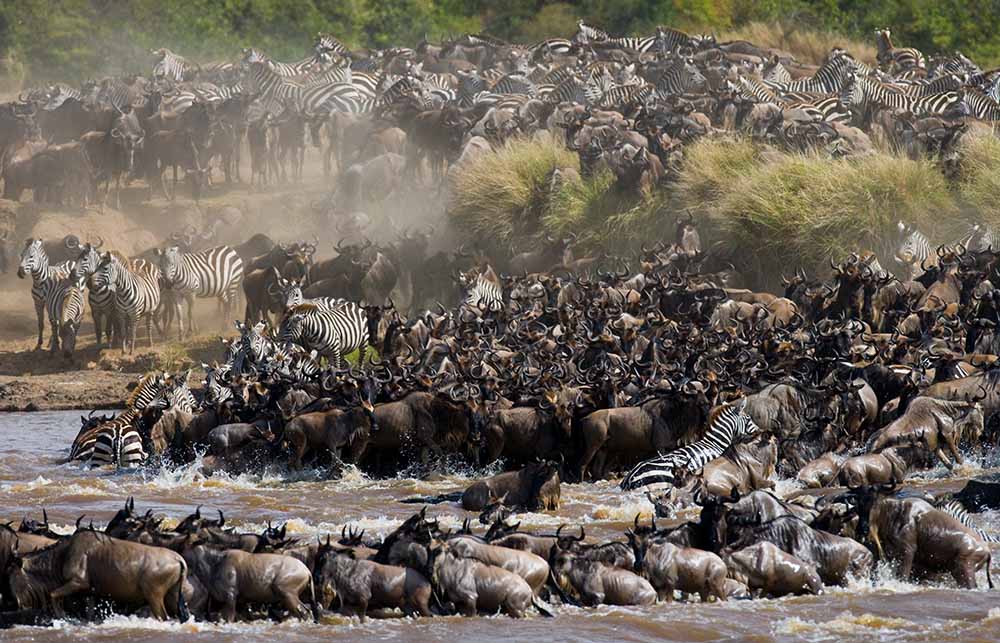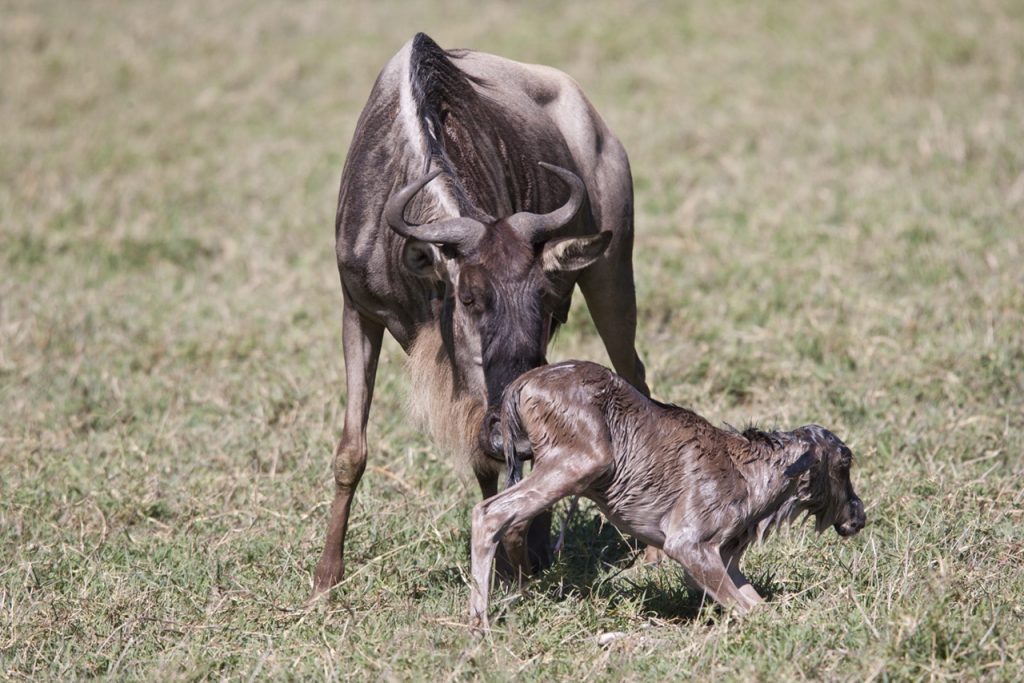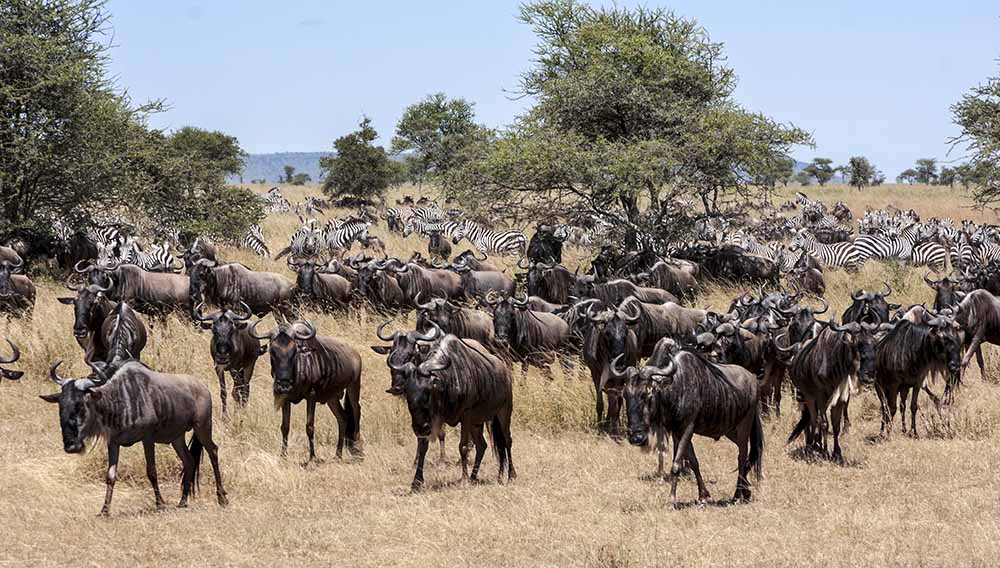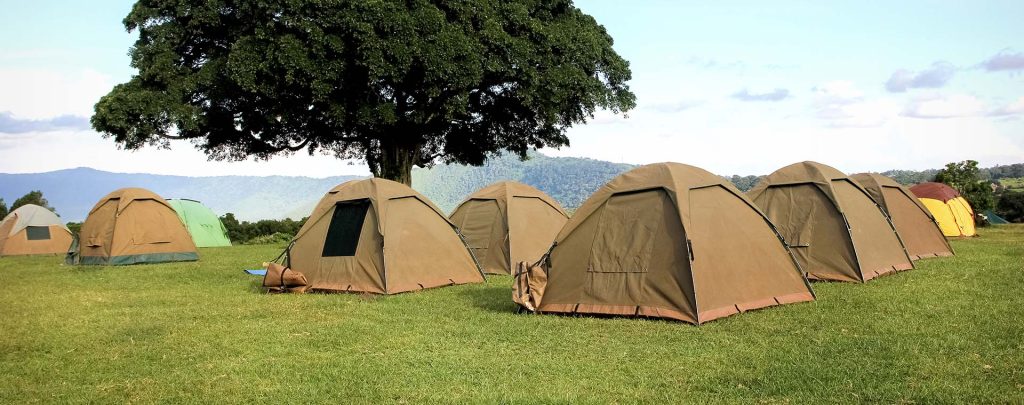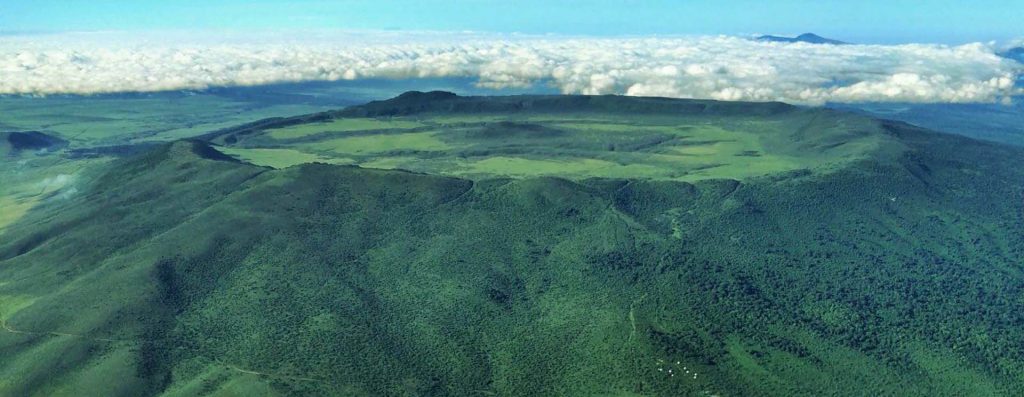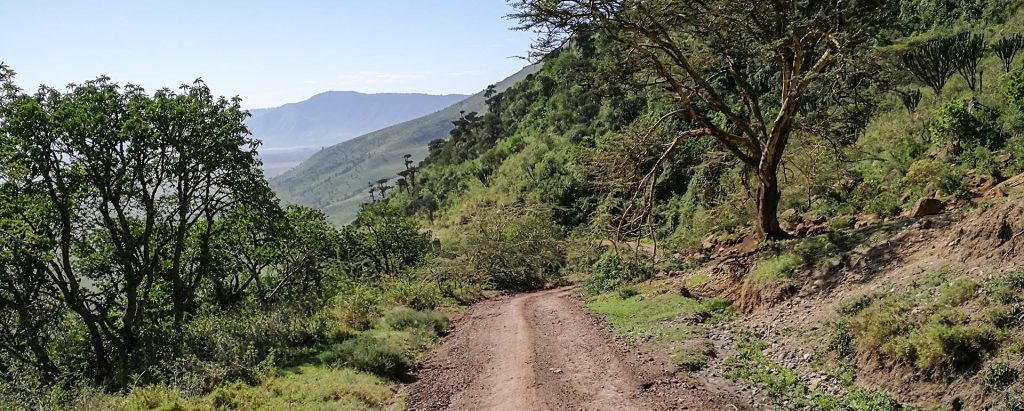Ngorongoro Crater
Ngorongoro Crater is the world’s largest intact and unfilled volcanic caldera, and is indeed the flagship tourism attraction of the Ngorongoro Conservation Area.
Measuring an area of 260 square kilometers and extending about 20km in diameter, the crater is actually a huge caldera of a volcano that collapsed to a depth of 610m about three million years ago. Over the course of time, streams of water made their way down the crater to form little ponds, and vegetation developed all over, attracting a wide range of wild animals. The crater is host to over 25,000 animals including populations of large mammals such as elephants, buffaloes, elands, wildebeests, zebras, gazelles, hippos, and rhinos, as well as such carnivores as lions, hyenas, jackals, and cheetahs. The ponds, or rather small lakes on the floor of the crater also host a wide-range of water birds including flamingoes and pelicans. Away from the crater floor, the forests on the crater rim is home to leopards, reedbuck, warthogs, and forest birds to complete a natural zoo, and Africa’s ultimate destination to see the “Big Five” (lion, elephant, rhino, leopard and buffalo).
Ngorongoro Tourism
From the misty mountains and lush forests to the sweeping grasslands with their teeming herds. Ngorongoro provides a rich adventure to every visitor. Part of the fees that you pay help the NCAA to carry out its many projects and duties and improve roads and other facilities and services. But a large part also goes to the central government to help support the country as a whole. NCA and the National Parks are the important earners of foreign exchange for Tanzania. The Ngorongoro Conservation Area Authority want you to enjoy Ngorongoro’s outstanding wildlife and scenery. You can help by respecting their rules. Please do what you can do to help protect this wonderful land, its wildlife and people.
When to Visit /Time to Visit Ngorongoro
The Ngorongoro Conservation Area is a destination for wildlife viewing that can be visited at any time of the year. Unlike on the plains, where the numbers of animals is dictated by the availability of food and water, abundant game is present inside the crater year round because food and water are always available for both herbivores and predators.
Outside the crater, but still in the conservation area, from around December to May (depending on the rains), over one million wildebeests and thousands of zebras and gazelles move south to calve in the short-grass plains around Ndutu that straddle the conservation area and Serengeti National Park. This is the area where the animals regroup to start the annual wildebeest migration that spans through the Serengeti ecosystem.
For birders, the period from November to March is the best time to see migrant bird species, in addition to the indigenous species. Botanists will enjoy most the wet season, which runs from March to early June.


